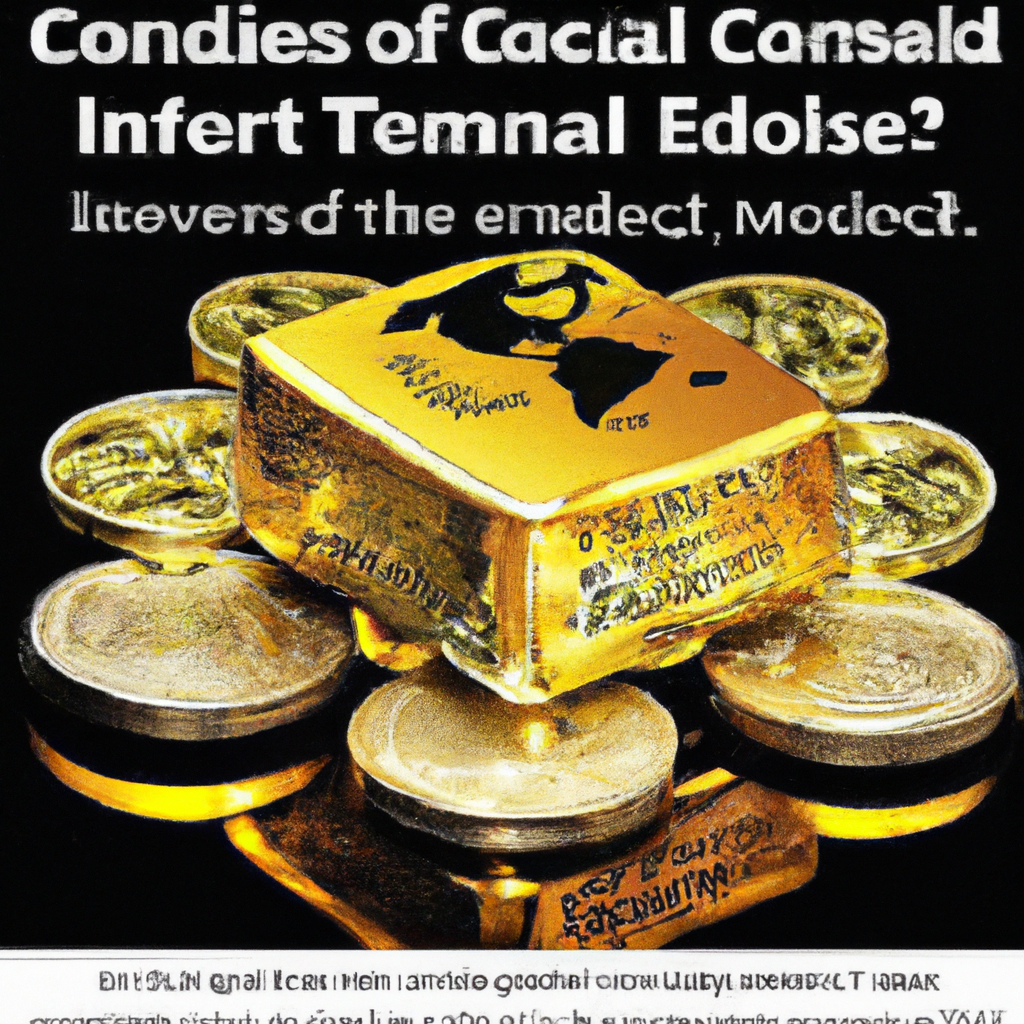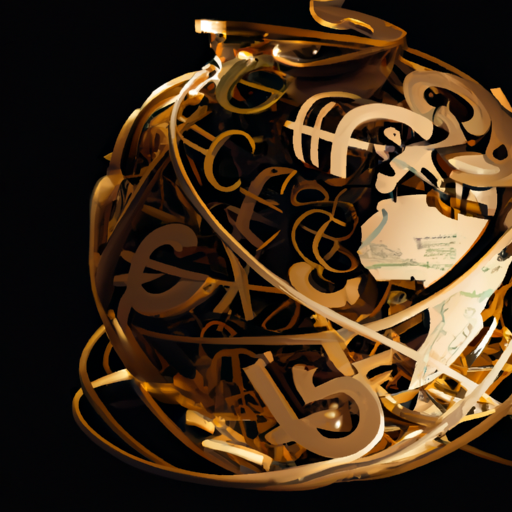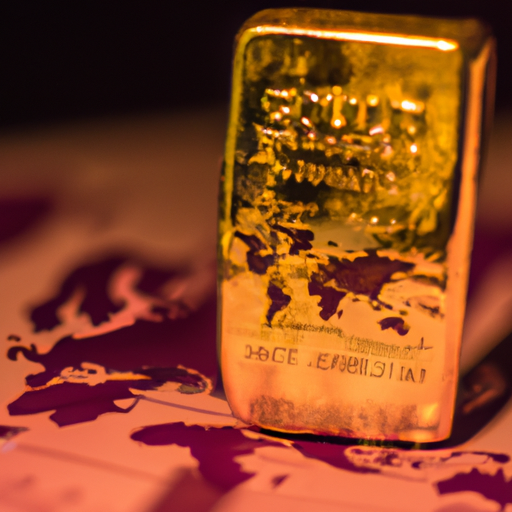International Events Influencing Currency Markets
Impact of geopolitical tensions
Geopolitical tensions play a significant role in shaping currency markets and, consequently, impacting the price of gold. When international events, such as political conflicts or war, arise, investors tend to seek safe-haven assets, including gold. The uncertainty and fear surrounding these events drive up demand for gold, causing its price to rise. For example, the tension between Saudi Arabia and Russia has caused oil and diesel prices to increase. However, this has weakened the Russian Rouble rather than major currencies like the dollar and euro. As a result, Russians may experience higher energy costs during winter.
Effect of trade disputes
Trade disputes between nations can have a profound impact on currency markets and the price of gold. Tariffs and trade barriers imposed by countries can disrupt global trade flows and create uncertainty in financial markets. In such scenarios, investors often turn to gold as a safe-haven asset, which drives up its demand and price. Therefore, events like trade disputes can significantly influence the gold market.
Role of economic indicators
The release of economic indicators, such as GDP growth, inflation rates, and interest rate decisions, can also greatly influence currency markets and the price of gold. Positive economic data, indicating a strong economy, can lead to a strengthening of a country’s currency, potentially resulting in a decline in gold prices. Conversely, negative economic indicators can weaken a currency and drive up the price of gold. Investors closely monitor these indicators to assess the health of economies and make informed decisions regarding gold investments.
International events, including geopolitical tensions, trade disputes, and economic indicators, play essential roles in influencing currency markets and determining the price of gold. As an investor, it is crucial to stay informed about the impact of these events to make well-informed decisions regarding gold investments.

## Determinants of Gold Price
Supply and demand dynamics
One of the key factors influencing the price of gold is the interaction between its supply and demand. Gold is a finite resource, and its availability depends on factors such as mining production, central bank reserves, and recycling. Fluctuations in supply can have a significant impact on the price of gold.
Inflation and interest rates
Inflation and interest rates play a crucial role in determining the value of gold. When inflation rises, investors often turn to gold as a hedge against currency devaluation. Similarly, low-interest rates can make gold more attractive as an alternative investment, driving up its demand and price.
Investment demand
Gold is considered a safe haven asset, especially during times of economic uncertainty. When investors lose faith in traditional financial markets, they often flock to gold, driving up its price. Factors such as geopolitical tensions, stock market volatility, and global crises can significantly impact investment demand for gold.
Global economic growth
The health of the global economy is closely linked to the price of gold. During periods of robust economic growth, demand for gold may decrease as investors seek higher-yielding investments. Conversely, economic downturns or recessions can lead to an increase in demand for gold as a reliable store of value.
Value of the US dollar
The value of the US dollar is inversely related to the price of gold. When the dollar weakens, gold becomes cheaper for international buyers, leading to increased demand and higher prices. Conversely, a stronger dollar can dampen the demand for gold and exert downward pressure on its price.
Various factors, including supply and demand dynamics, inflation and interest rates, investment demand, global economic growth, and the value of the US dollar, all play a crucial role in determining the price of gold. Monitoring these determinants can help investors make informed decisions in the face of international events.
Financial Markets and Gold Price
Correlation with stock markets
In times of international events, it is important to understand the correlation between gold prices and stock markets. When stock markets face uncertainty and volatility, investors tend to seek safe-haven assets like gold. This increased demand for gold drives up its price. On the other hand, when stock markets perform well, investors may move away from gold and into stocks, causing the gold price to decrease.
Safe-haven demand
Gold has a long-standing reputation as a safe-haven asset in times of geopolitical tensions or economic uncertainties. During international events that create instability, such as conflicts or economic crises, investors flock to gold as a store of value. The higher demand for gold as a safe investment leads to an increase in its price.
Investor sentiment
Market sentiment plays a crucial role in determining gold prices in the face of international events. If investors perceive certain events as negative for the global economy, they may rush to buy gold, driving up its price. Conversely, if investors have a positive outlook on the global economy, they may prefer riskier assets, causing the gold price to decline.
Role of central banks
Central banks hold significant influence over gold prices. When central banks buy gold, it signals confidence in the asset and can drive up its price. Conversely, if central banks decide to sell gold reserves, it can put downward pressure on the gold price. Central bank actions in response to international events can significantly impact the gold market.
Understanding these determinants is crucial for investors and market participants to navigate the gold market in the face of international events. By monitoring the correlation with stock markets, safe-haven demand, investor sentiment, and central bank actions, you can make informed decisions about the gold market and its potential implications for your investments.
Impact of Rising Oil and Diesel Prices
As the prices of oil and diesel continue to rise due to actions taken by Saudi Arabia and Russia, it is important to understand the potential implications on various aspects of the global economy. These international events not only affect currency markets and financial markets, but they also have a significant impact on the price of gold.
Effect on Inflation
One of the key consequences of rising oil and diesel prices is the potential for increased inflation. As energy costs go up, businesses may pass on these expenses to consumers, leading to higher prices for goods and services. This can result in a decrease in purchasing power and a rise in the overall cost of living.
Demand for Alternative Energy Sources
With the increasing prices of oil and diesel, there is a growing demand for alternative energy sources. This shift towards renewable energy options, such as solar and wind power, can have a significant influence on the gold market. As investors flock to these alternative energy sectors, the demand for gold as a safe haven asset may decrease, thereby affecting its price.
Interplay between Oil and Gold Prices
There is often an interplay between oil and gold prices. Historically, when oil prices rise, the demand for gold tends to increase as well. This is because higher oil prices can lead to concerns of inflation and economic instability, prompting investors to seek the safety of gold as a store of value. Therefore, the rise in oil and diesel prices can potentially drive up the price of gold.
International events, particularly the rising oil and diesel prices attributed to Saudi Arabia and Russia, have the potential to significantly influence the gold market. The impact can be seen through the effect on inflation, the demand for alternative energy sources, and the interplay between oil and gold prices. Therefore, it is important to closely monitor these events as they unfold to gain insights into the dynamics of the gold market.
Role of Saudi Arabia and Russia
Oil production decisions
The actions of Saudi Arabia and Russia heavily influence international events that impact currency markets, determine gold prices, and affect financial markets. One of the key factors to consider is the oil production decisions made by these two countries. Any changes in their oil output directly influence the supply and demand dynamics of the global oil market. When Saudi Arabia and Russia decide to increase or decrease their oil production levels, it has a significant impact on the price of oil, which in turn affects the gold price.
Geopolitical tensions
Geopolitical tensions between countries can also play a crucial role in determining the gold price in the face of international events. Geopolitical events, such as conflicts or political instability, tend to increase uncertainty and flight to safe-haven assets like gold. For example, if there is a rise in tensions between major global powers, investors may perceive gold as a reliable store of value and choose to invest in it, leading to an increase in its price.
Currency devaluation risks
Furthermore, the fluctuations in currency values can have a direct impact on the gold price. Countries like Saudi Arabia and Russia, with their immense influence in the oil market, have the ability to devalue their currencies intentionally. By manipulating their currencies, these countries can gain a competitive advantage in the global trade market. Such currency devaluation risks may cause investors and central banks to turn to gold as a safe haven, thereby driving up its price.
The actions and decisions of Saudi Arabia and Russia can significantly affect the gold price in the face of international events. Changes in oil production, geopolitical tensions, and currency devaluation risks are all factors that investors closely monitor to assess the direction of gold prices.
Weakening Rouble and its Consequences
The recent rise in oil and diesel prices, spurred by actions from Saudi Arabia and Russia, is causing concerns in the global currency markets. While these actions may weaken the Rouble, it is important to understand the potential implications for the Russian economy and how it can affect energy costs and market reactions.
Implications for Russian economy
A weakened Rouble can have significant repercussions for the Russian economy. As energy prices increase, Russians may face higher costs, especially during the winter months when heating demands are at their peak. This can have a direct impact on the daily lives of individuals living in Russia, making it a key concern for policymakers and citizens alike.
Effect on energy costs
The rise in energy costs due to the weakened Rouble can result in Russians facing challenges in managing their household budgets. With colder temperatures, the demand for heating will be higher, amplifying the impact of increased energy prices. As a result, individuals may need to make difficult choices regarding their expenses, affecting their overall quality of life.
Market reactions to currency devaluation
Currency devaluation can have far-reaching effects on the financial markets. When the Rouble weakens, investors may lose confidence in the Russian economy, leading to capital outflows and a decrease in foreign investments. These market reactions can further exacerbate the economic challenges faced by Russia, impacting its growth prospects and overall stability.
International events, such as the rise in diesel prices due to Saudi Arabia and Russia, have the potential to significantly impact the gold price, currency markets, and the Russian economy. The consequences of a weakening Rouble can range from increased energy costs to market instability, necessitating careful attention and strategic planning from policymakers and investors alike.
Putin’s Plans and the Gold-Backed Currency
Introduction of BRICKS currency
In the face of increasing energy costs and rising oil and diesel prices due to actions taken by Saudi Arabia and Russia, it is important to understand the potential impact on currency markets and financial markets as a whole. It appears that Putin and his advisors have been considering various plans to counteract these effects. Plan A involved the introduction of a new BRICKS currency backed by gold, aiming to make the dollar and euro more competitive against the rouble. This plan, however, may have limited success given the dominance of the dollar as the ruler of currencies.
Comparison with the dollar and euro
As part of Putin’s plans, a fundamental comparison has been made between the rouble and major currencies such as the dollar and euro. Despite the potential advantages of a BRICKS currency, the current weak position of the rouble may not be significantly improved by this introduction. It is important to consider the implications of this comparison in terms of the gold price determinants and its impact on international events.
Backing the rouble with gold
In a more radical move, Plan B involves backing the rouble with gold. While this may seem like a significant step, it could have minimal impact in reality. The value of gold, when compared to other currencies, is relatively stable and may not provide the desired boost to the rouble. However, it is crucial to monitor the developments surrounding this plan and evaluate its potential consequences for the gold price determinants and their influence on international events.
As international events unfold and Putin’s plans regarding the introduction of a gold-backed currency take shape, it is important to closely observe and analyze the impact on the gold price determinants, currency markets, and financial markets. Such developments can have far-reaching implications and may shape the future of gold as a valuable asset in times of uncertainty.
Analysis of Plan A: BRICKS Currency
Expected impact on currency competitiveness
Under Plan A, the introduction of a new BRICKS currency backed by gold was expected to enhance the competitiveness of the dollar and euro against the Russian rouble. This would have significant implications on the gold price and international events. With the BRICKS currency, the value of gold would be a determining factor in currency markets, influencing the exchange rates and trade balances between countries.
Potential challenges and risks
While Plan A may seem promising, it faces several challenges and risks. The implementation of a new currency requires the cooperation and agreement of multiple nations, which can be complex and time-consuming. Additionally, the transition from existing currencies to the BRICKS currency could destabilize financial markets, leading to increased volatility.
Market response to the proposal
The market response to Plan A would largely depend on investor confidence and perception of the BRICKS currency. If seen as a viable alternative to established currencies, it could lead to a decline in the demand for the dollar and euro, subsequently driving up the price of gold. However, any doubts or uncertainties surrounding the implementation of the new currency could have adverse effects on the market, causing fluctuations in gold prices and currency exchange rates.
The analysis of Plan A: BRICKS Currency highlights its potential impact on currency competitiveness, the challenges it may face, and the market response it could generate. Understanding these factors is crucial in gauging the possible repercussions on gold prices and international events.
Analysis of Plan B: Gold-Backed Rouble
Advantages and disadvantages
The idea of backing the Russian rouble with gold, known as Plan B, has been discussed as a potential strategy to make the currency more competitive in the face of rising oil and diesel prices. One advantage of this approach is that it would provide a tangible and stable asset to support the value of the rouble. Gold has historically been seen as a safe haven during times of economic uncertainty, and therefore, a gold-backed rouble could attract investors and increase confidence in the currency. Additionally, it could provide a hedge against inflation, as the value of gold tends to hold up well in times of monetary expansion.
However, there are also potential drawbacks to implementing a gold-backed currency. One concern is the practicality and logistics of such a system. Maintaining a sufficient gold reserve and ensuring its security would require substantial resources and infrastructure. Additionally, the value of gold can be volatile, which could create instability in the currency’s value. Finally, a gold-backed rouble may limit the flexibility of monetary policy, as changes in interest rates and money supply may be constrained by the need to maintain the gold backing.
Significance of rouble’s gold backing
If Plan B were to be implemented, it would have significant implications for the global financial markets. A gold-backed Russian rouble could potentially challenge the dominance of the US dollar and the euro in international trade and investment. It would provide an alternative anchor currency and could even lead to the formation of a new international monetary system. The move could signal a shift away from reliance on paper currencies and towards a return to the gold standard.
Comparison with other gold-backed currencies
It is worth noting that Russia’s consideration of a gold-backed currency is not unprecedented. Countries like China have already been diversifying their foreign exchange reserves by increasing their gold holdings. Furthermore, there are existing gold-backed currencies such as the Chinese yuan and the Venezuelan bolivar. However, the success or failure of these currencies in stabilizing their respective economies has been mixed. The effectiveness of a gold-backed rouble would depend on numerous factors, including the management of the currency and the overall economic conditions in Russia.
The idea of a gold-backed Russian rouble, although intriguing, presents both advantages and disadvantages. While it could provide stability and increase confidence in the currency, there are concerns about logistical challenges and the constraints it may impose on monetary policy. Nonetheless, if implemented successfully, the gold backing could have far-reaching implications for the global financial system. Only time will tell whether Plan B becomes a reality and how it would fare in the face of international events.
Conclusion
Summary of gold price determinants in the face of international events
In conclusion, international events play a significant role in determining the price of gold. Geopolitical factors and currency fluctuations have a direct impact on the value of this precious metal. Recent events in Saudi Arabia and Russia have caused diesel prices to rise, which in turn affects currency markets and financial markets. However, it is important to note that these actions are more likely to weaken the Rouble rather than major currencies like the dollar and the euro.
The role of geopolitical factors and currency fluctuations
Geopolitical factors, such as tensions between nations or conflicts, can create uncertainty in the global economy. This uncertainty often leads to investors seeking safe-haven assets like gold, which drives up its price. Additionally, currency fluctuations, especially in major economies, can also have a significant impact on the value of gold. When a currency weakens, investors flock to gold as a hedge against inflation and currency devaluation.
Long-term implications for gold as an investment
Gold has historically been seen as a reliable investment during times of economic uncertainty. As international events continue to shape the global economy, the demand for gold is likely to remain strong. This makes gold a potentially lucrative long-term investment option for individuals looking to diversify their portfolios and safeguard their wealth.
In summary, understanding the gold price determinants in the face of international events is crucial for anyone interested in gold as an investment. By keeping an eye on geopolitical factors and currency fluctuations, investors can make informed decisions and potentially benefit from the opportunities that arise during times of economic uncertainty.



